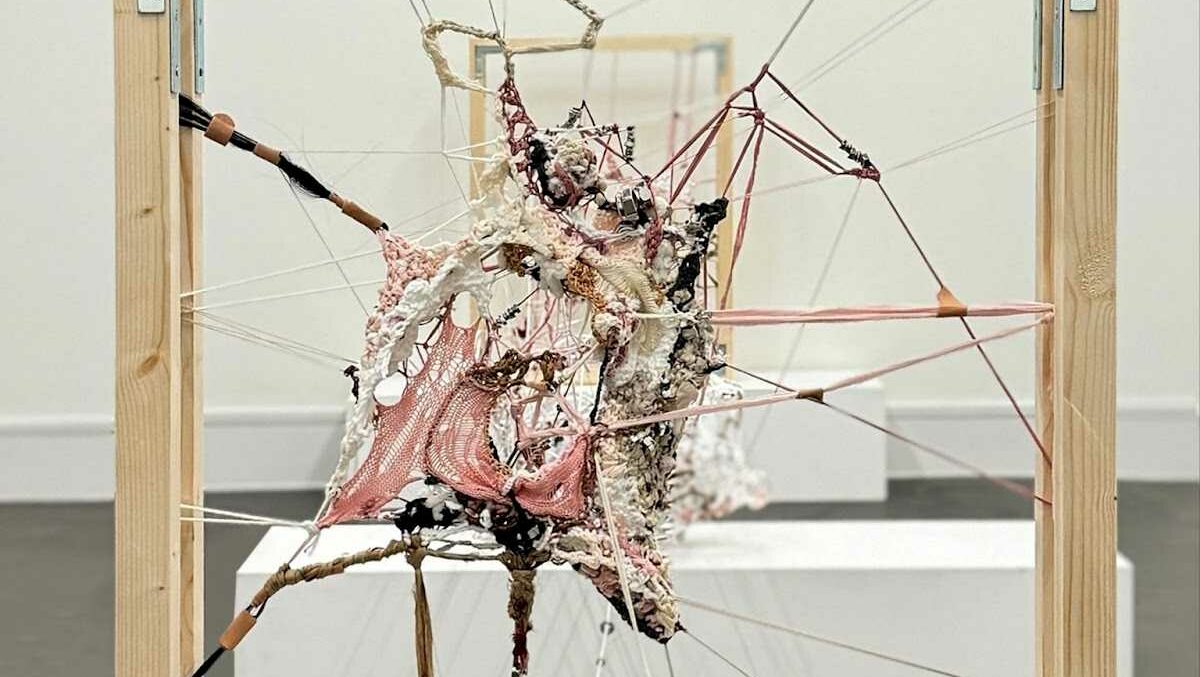How Yvonne Xiao Yang Bridges Tradition and Modernity in Global Art
In partnership with Miss Investigate
By Matt Sorum

Textile artist Yvonne Xiao Yang’s latest exhibition features suspended fabric installations that explore themes of tension and connection. The pieces combine torn and woven materials, reflecting her ongoing examination of resilience and fragility. Yang uses traditional fibre techniques to address contemporary identity, displacement, and belonging themes.
Yang is reshaping the global conversation around fine arts by transforming textiles, a medium steeped in history, into works of contemporary art. Her recent solo exhibition in New York represents a personal and professional milestone, culminating in years spent refining her craft and voice. “Textiles carry a legacy,” Yang says. “They are woven with history and memory. I strive to honour that legacy while pushing it forward.”
The Foundations of a Global Artist
Yang’s artistic journey begins at Parsons School of Design, where she receives a competitive four-year scholarship to study fashion design. This training gives her a strong foundation in form, structure, and material skills that evolve into her signature installations. She builds on this with a master’s degree in Cultural and Creative Industries at King’s College London, where she explores the intersection of art and cultural research.
Her early career includes working as an artist assistant for Ivana Bašić, a multidisciplinary artist known for precise, conceptual works. “Working with Ivana taught me that every detail matters,” Yang says. This combination of technical skill and research-based practice shapes Yang’s approach to creating profoundly personal textile art that resonates universally.
Reimagining Textile Art for Modern Audiences
Textile art has a long history but has been categorised as a craft rather than fine art. Yang challenges this perception. Her work highlights cultural identity, the immigrant experience, and family relationships. These are not traditional subjects for textile art, yet Yang uses the medium to bring these themes into focus.
“Textiles are a metaphor for resilience,” Yang says. “They stretch and bend like identity does when shaped by displacement and integration.”
One piece features fabrics torn and layered to represent fragmented identities, while another uses woven threads to symbolise fragile connections within diaspora communities. These works invite audiences to connect emotionally, while Yang’s meticulous execution emphasises her ability to combine traditional textile techniques with contemporary ideas.
A Renaissance in Textile Art
Yang’s rise comes as textile art experiences a resurgence. Once seen as purely decorative, the medium is now recognised as a powerful tool for cultural critique and storytelling. Yang is part of this movement, changing textile art by merging historical techniques with modern narratives. She amplifies underrepresented stories using tactile materials like yarn, fabric, and found objects. Her ability to bring urgency to these narratives has made her work stand out in a growing field.
Yang’s first solo exhibition in New York marks a turning point in her career. The show highlights her exploration of diaspora and cultural displacement, using materials to reflect emotional tension. Fabrics stretched to extremes, and delicate threads woven into patterns tell stories of identity, memory, and resilience.
“This exhibition reflects my own experiences, but it is not just about me,” Yang says. “It speaks to the shared challenges of people who live between cultures, looking for belonging.”
This milestone solidifies Yang’s growing influence as a textile artist and positions her work within the broader cultural dialogue about identity and inclusion.
A Global Vision
Yang’s plans continue with London. With representation in London and New York, she aims to expand her practice internationally. She hopes to contribute to the United Kingdom’s art community while continuing to push the boundaries of textile art. Her vision combines Eastern and Western influences, creating work that resonates across cultures.
“Art can connect people beyond borders and languages,” Yang says. “I want to create spaces where stories can be shared and reflected on, where people feel seen.”
Yvonne Xiao Yang’s work bridges tradition and modernity, proving that textile art can be timeless and forward-thinking. Her ability to combine historical techniques with creative storytelling gives her work a unique power that speaks to identity, resilience, and cultural connection.
Rolling Stone UK newsroom and editorial staff were not involved in the creation of this featured content
